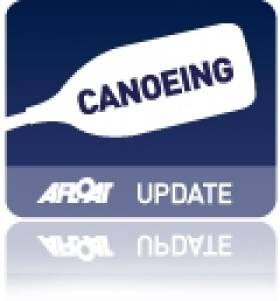Displaying items by tag: DCU
UCD 1 Victorious at IUSA Easterns in Kerry
The 24 teams from UCD, DCU, DIT, CIT, UCC, NUIG, Queens and Trinity were greeted with sunny blue skies as they arrive down to Dingle Sailing Club on Saturday morning the 17th of October to compete in the first day of the 2015 IUSA Easterns. The winds were light in the harbour and struggling to reach five knots. While the boats were being rigged, course being set and committee getting in position the breeze began to rise as if to welcome the sailors to the waters of Dingle.
The races got off to a slow start due to problems arising with the jury boats in the flooding tide, making areas of the course to shallow to sail in. Once these problems were remedied the races flew by. Locals and tourists looked on from the grass area as they were treated to watch very close racing. As the sun began to set and the temperatures dropped the committee called racing for the day after 61 tight races. At the end of the day the leaders of the gold, silver and bronze round robins were UCC1, UCD3 and UCD5 respectively.
An earlier first gun saw the teams on the water for 9:30am on Sunday morning and racing got underway immediately. The racing went straight into the quarterfinals with best of 3 matches for the gold and silver fleet and best of one for the bronze fleet. The finals were UCD1 versus CIT1 in the gold fleet, TCD3 versus TCD4 in the silver fleet, and TCD5 versus TCD6 in the bronze fleet with UCD1, TCD3 and TCD5 all coming out victorious.
UL Take Title at Irish Kayaking Intervarsities
#KAYAKING - The University of Limerick were overall winners in the 2012 Irish Kayaking Intervarsities at GMIT Castlebar last weekend.
As the Mayo Advertiser reports, some 500 students were on hand for the three days of competition, which kicked off with canoe polo on Lough Conn (won by GMIT over DCU).
Saturday's action saw the whitewater contest on the Clydagh River, with Limerick emerging on top, and the freestyle event on the River Clare at Tuam Wave.
Sunday closed with the long distance event at Lough Lannagh, which clinched the weekend for UL's kayakers.
Mayo also hosted the Irish Intervarsity Sailing Championships in Rosmoney last week, which attracting 200 students to the Westport area.
Irish Branch of Institute of Chartered Shipbrokers Courses 2011
Dublin City University will be the venue for the lectures which will cover the following modules:
•Introduction to Shipping
•Shipping Business
•Port Agency and Liner Trades
This year the institute are to include lectures on Economics of Sea Transport & International Trade. These lectures are suitable for students who have already embarked on their course of studies and wish to obtain full membership of the Institute.
The date for completion of Registration Forms is 1 September and the lectures commence on 17th September. For further information please contact Hilary Parks on 087 6566610 or [email protected] and visit www.icsbranch.ie

























































